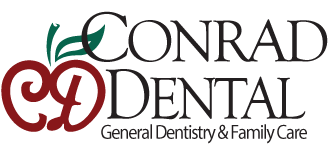Preventive Dentistry
Maintaining good dental health

Every patient [even denture patients] needs to be seen at least once a year, and the vast majority of patients should visit their dentist two to four times a year. Studies show that calculus [tartar] begins to accumulate on tooth surfaces between 90 and 120 after professional cleaning. Many patients benefit from professional cleanings that are more frequent than every six months, especially those who don't floss daily.
Facts on Brushing
What is the best technique for brushing? There are a number of effective brushing techniques. Patients are advised to check with their dentist or hygienist to determine which is the best one for them since tooth position and gum condition vary. One effective, easy-to-remember technique involves using a circular or elliptical motion to brush a couple of teeth at a time, gradually covering the entire mouth.
Things you will need
- Dental Floss
- Mouthwash
- Toothbrushes
- Toothpaste
- Dental Floss
- Toothpaste
Tooth brushing steps
- Squeeze some toothpaste onto a soft-bristled toothbrush. Your toothpaste should contain fluoride and bear the American Dental Association (ADA) seal.
- Use short, back-and-forth brushing motions to clean the outside and inside surfaces of the teeth, as well as the chewing surfaces. Follow with up-and-down motions to clean the inside surfaces of the front teeth.
- Brush along the gum line. This is extremely important, as gum disease starts here. Brush gently to avoid damaging your gums.
- Make sure to brush your back molars, where bacteria like to hide.
- Brush your tongue to remove bacteria that cause bad breath.
- Spit out the toothpaste and rinse your mouth with water or mouthwash.
- Try to floss at least once a day, since most adult cavities occur between teeth. The most important time to floss is before going to bed. Floss before or after you brush, either is fine. Guide the floss between the teeth and use it to gently rub the side of each tooth.
Soft or hard bristles?
In general, a toothbrush head should be small (1" by 1/2") for easy access. It should have a long, wide handle for a firm grasp. It should have soft, nylon bristles with round ends. Some brushes are too abrasive and can wear down teeth. A soft, rounded, multi-tufted brush can clean teeth effectively. Press just firmly enough to reach the spaces between the teeth as well as the surface. Medium and hard bristles are not recommended.
How long should I brush?
It might be a good idea to brush with the radio on, since dentists generally recommend brushing 3-4 minutes, the length of an average song. Using an egg timer is another way to measure your brushing time. Patients generally think they're brushing longer, but most spend less than a minute brushing. To make sure you're doing a thorough job and not missing any spots, patients are advised to brush the full 3-4 minutes twice a day instead of brushing quickly five or more times through the day.
Should I brush at work?
Definitely, but most Americans don't brush during the workday. Dentists say it's a good idea to keep a toothbrush in your desk, which increases the chances that You’ll brush during the day by 65 percent, according to a recent survey released by Oral-B Laboratories and the Academy of General Dentistry. Getting the debris off teeth right away stops sugary snacks from turning to damaging acids, and catches starchy foods like potato chips before they turn to cavity-causing sugar. If you brush with fluoride toothpaste in the morning and before going to bed, you don't even need to use toothpaste at work. You can just brush and rinse before heading back to the desk. If you don't have a toothbrush, rinsing your mouth with water for 30 seconds after lunch also helps.
Sources:
Barbara Ann Rich, DDS, Cherry Hill, New Jersey;
Oral-B Laboratories; "Snack Smart for Healthy Teeth."
Facts on Flossing
Plaque is a sticky layer of material containing germs that accumulates on teeth, including places where toothbrushes can't reach. This can lead to gum disease. The best way to get rid of plaque is to brush and floss your teeth carefully every day. The toothbrush cleans the tops and sides of your teeth. Dental floss cleans in between them. Some people use waterpiks, but floss is the best choice.
How should I floss?
There are two flossing methods: the spool method and the loop method. The spool method is suited for those with manual dexterity. Take an 18-inch piece of floss and wind the bulk of the floss lightly around the middle finger. (Don't cut off your finger's circulation!)
Wind the rest of the floss similarly around the same finger of the opposite hand. This finger takes up the floss as it becomes soiled or frayed. Maneuver the floss between teeth with your index fingers and thumbs. Don't pull it down hard against your gums or you will hurt them. Don't rub it side to side as if you're shining shoes. Bring the floss up and down several times forming a "C" shape around the tooth being sure to go below the gum line.
The loop method is suited for children or adults with less nimble hands, poor muscular coordination or arthritis. Take an 18-inch piece of floss and make it into a circle. Tie it securely with three knots. Place all of the fingers, except the thumb, within the loop. Use your index fingers to guide the floss through the lower teeth, and use your thumbs to guide the floss through the upper teeth, going below the gumline forming a "C" on the side of the tooth.
How often should I floss?
At least once a day. To give your teeth a good flossing, spend at least two or three minutes.
